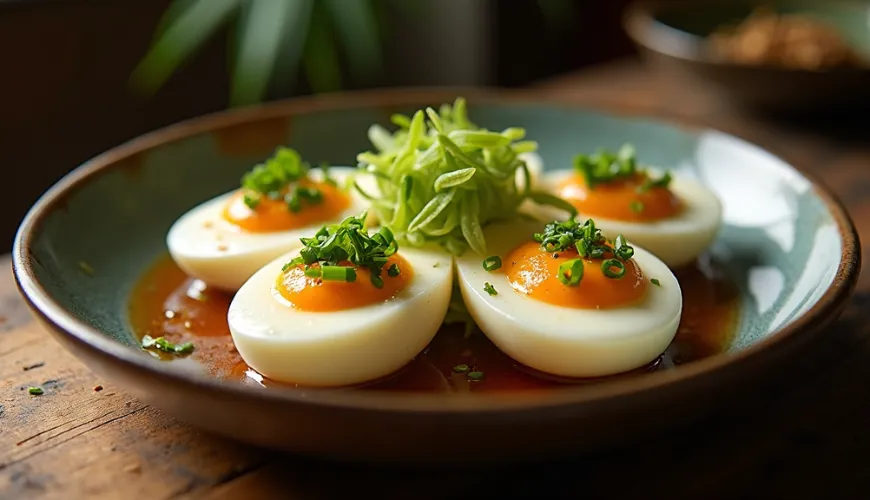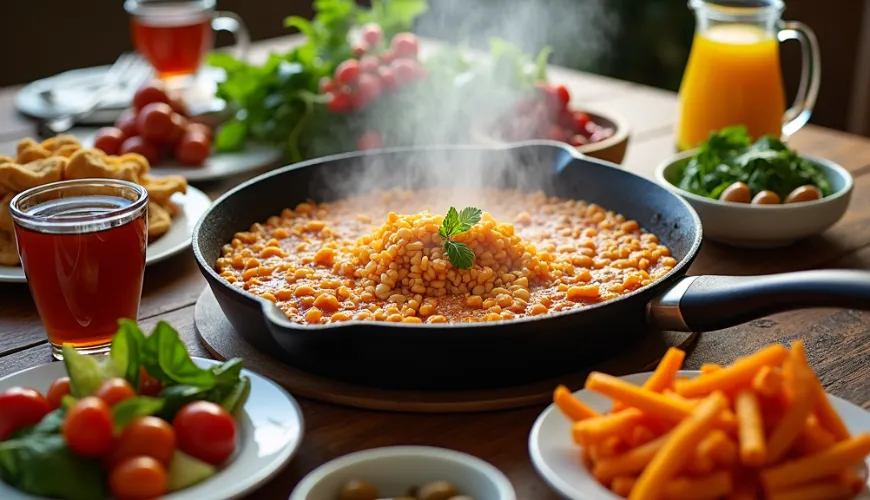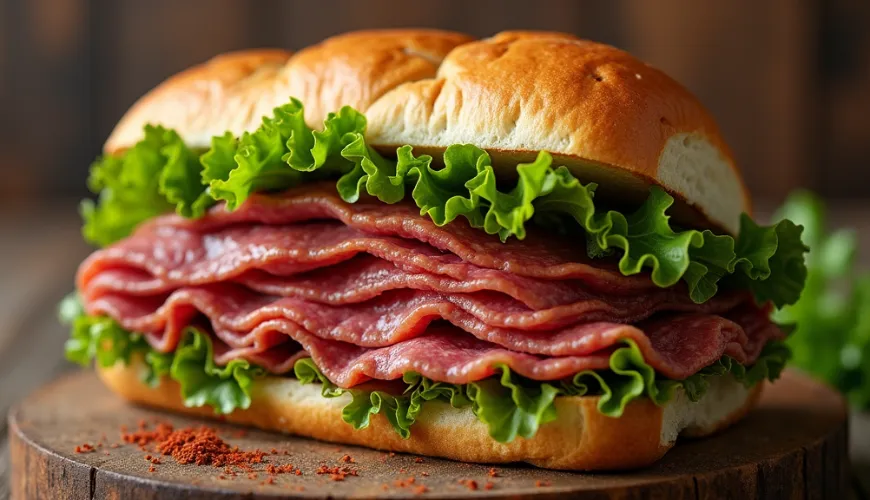
How to Enjoy Chinese Pickled Eggs in Unconventional Dishes

The Secret of Chinese Pickled Eggs - A Taste of Tradition That Transcends Time
Eggs are among the oldest foods consumed by humans. While in Europe, we mostly know them hard-boiled, scrambled, or as part of cakes, in Asia they play a completely different, often surprising role. One fascinating example of this different approach is Chinese pickled eggs, also known as "century eggs" or "thousand-year eggs" – though in reality, they age for only a few weeks to months. This traditional dish, which gives a simple egg a completely new dimension, is now being discovered not only by lovers of Asian cuisine but also by those seeking alternatives to industrially processed foods.
What are Chinese Pickled Eggs?
At first glance, they may seem more like a creation of natural forces than a human kitchen. Chinese pickled eggs – usually duck eggs – are submerged in a mixture of clay, salt, ash, lime, and rice hulls. After several weeks to months, the eggs transform: the white acquires a gelatinous, dark amber texture, while the yolk becomes creamy to cheesy with a greenish or gray hue. The result is a taste that is hard to compare to anything familiar – distinctive, slightly ammonia-like, with umami and earthy notes.
Does it sound strange? Perhaps. But much like with aged cheese or fermented vegetables, a controlled process occurs here that transforms the raw ingredient into an entirely new form. And just as Europeans have come to love moldy cheeses or fermented fish, these unusual eggs are finding their fans – not only in Asia but also in the West.
A Tradition That Endures for Centuries
The first mentions of this preservation method date back to the Ming dynasty, roughly 600 years ago. According to legend, a farmer discovered eggs that were accidentally left in slaked lime. When he dared to taste them, he was surprised to find that they not only had a longer shelf life but also an interesting new flavor.
Today, the centuries-old tradition is still maintained. While modern versions are often produced in controlled conditions and without using potentially hazardous ingredients, the basic principle remains the same – it is about natural fermentation without the need for refrigeration or chemical preservatives. This makes pickled eggs not only durable but also environmentally friendly, if produced traditionally.
How are They Consumed?
While in Europe we associate eggs mainly with breakfast, in China, pickled eggs are served as a delicacy – usually with rice, tofu, congee, or as part of a cold appetizer. They are also a popular component of so-called cold plates, reminiscent of tapas, and often accompany tea ceremonies. They pair well with spicy dishes – their creamy texture and distinctive flavor perfectly balance the heat of chili or ginger.
For example, in a Chinese restaurant in Vancouver known for its authentic cuisine, a simple dish is served: sliced century eggs with fresh tofu, dressed with sesame oil, spring onions, and soy sauce. This uncooked appetizer has fans throughout the city and demonstrates that even the most traditional recipe can find its place in modern gastronomy.
Health Aspects and Myths
One of the most common questions that Chinese pickled eggs raise is about safety and health effects. In the past, there were rumors that they contained lead – but this applied only to some illegal or uncertified products that used unsuitable preservation compounds. Today, production is strictly regulated, and quality producers use only safe and natural ingredients.
From a nutritional perspective, pickled eggs are not harmful – on the contrary, they retain most of the proteins, vitamins, and minerals found in regular eggs. Additionally, they contain fermentation products that can have a beneficial effect on digestion. As with other fermented foods, the key is moderate consumption and the quality of the ingredients used.
Sustainability and Handcrafting
While in many countries, eggs are sold as a cheap daily commodity, in Chinese tradition, they are more of a respected delicacy that deserves time and care. Pickling extends shelf life without the need for refrigerators, which is not only ecological but also practical – especially in areas with limited access to electricity or when striving for a lower carbon footprint at home.
Although homemade production is time-consuming, it is possible to pickle even small quantities. Recipes vary from region to region, with some adding tea leaves, others relying on ginger, garlic, or hibiscus flowers. The result is always a unique product that reflects not only geography but also the character of the cook.
And that is the charm of these eggs – they are living proof that slow and deliberate food processing still has its place, even in the era of instant meals and ultra-processed snacks.
How to Start?
If you're tempted to try pickled eggs but are unsure where to begin, the ideal choice is to buy a ready-made product from a reputable manufacturer. In Asian stores or specialized e-shops, you can commonly find packages with several eggs that last for months at room temperature. Look for brands that declare a lead-free production process and transparent ingredients. At home, just slice and serve them – ideally with delicate rice, tofu, or fresh vegetables.
For the more adventurous, there is the option of homemade preparation. On the internet, you can find many recipes and guides from people who are happy to share their experiences. The production takes several weeks, and although the result may initially seem strange, the taste might surprise you. As one fan of fermented eggs said on a traditional Chinese cuisine forum: "It's like tasting olives for the first time – strange at first, but then you can't do without them."
In Europe, we are just learning to perceive fermentation as a way not only to extend shelf life but also to achieve deeper flavor and greater sustainability. And Chinese pickled eggs are an excellent example of how even simple food can tell a story – of patience, creativity, and connection with nature. Perhaps it's time to give them a chance beyond Asian restaurants.

